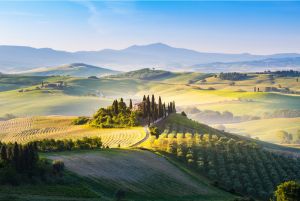Haza
| Government |
|---|
| Feudalism |
| Capital |
| Beljovac |
| Cities |
| Ide Volcar, Voj Sunac, Pestyk |
| Major Worship |
| Boccob, Lirr, Olidammara, Pholtus |
| Climate |
|---|
| Mild |
| Exports |
| Artwork, coffee, cotton, jewelry, olive oil, rice, silver |
| Imports |
| Artwork, gems, grain, leather goods, wine |
The Kingdom of Haza and the Protectorate of Vilju more commonly known as Haza is a country to the north of the Sarodin Sea. It is quite rich and highly developed and has been ruled by House Meloi for centuries.
Vilju is a small region in the northeast of Haza and it is technically a protectorate but this is purely because of an old political ploy that allows House Meloi's crown prince or princess to be the king or queen of Vilju and their children to be princes/princesses in their own right and thus to be able to use those honorifics.
Vilda, the neighbor to the east is technically an independent country but in reality a vassal of Haza.
Government
Haza is mostly a traditional feudal system with the king or queen ruling through many vassals; dukes, earls, barons, etc. The country has many noble families, some of more influence than others. Vassals are free to rule their fief as they see fit, with some restrictions such a treating the peasantry well and upholding Hazan ideals.
Crime differs per fiefdom but is usually not too bad. Taxes are not low but almost anyone can make a good living here.
Magic
Of all organizations originating from south of the Sarodin Sea, Abjura Dolana is probably the one with the largest foothold north of the sea. They have a quite close relationship with the Haza government and help with identifying any arcane spellcasters who enter the country. Said spellcasters are then given the choice to pay 5 gold pieces for a license that requires them to also swear fealty to the royal house and wear a badge indicating they did, they can then be ordered to help out by guardsmen or other government officials, or pay 500 gold pieces for a license without the oath.
Religion
Pholtus is the state religion but they have lost influence over the centuries. They still have temples in all cities though. Olidammara represents another aspect of the populace; they are quite the bon vivants when they can be. Boccob and Lirr found a warm welcome here after Collapse and their worship is more widespread than one would expect.
Geography
Bordered in the west by the impenetrable Gora Mountains, the country features rolling hills and wide valleys as one goes east. Agricultural activity here is quite varied with rice being the staple crop. This is also where the country's coffee is cultivated.
West of the Ira river valley the terrain turns into plains with just the occasional tree; mostly eucalyptus, ojcu, and sycamore. These prairies are roamed by both wild and domesticated guanacos and alpacas. The former are kept for their meat and the latter for their wool.
Going further east we come to the Minar Basin which is shared with Vilda. This area is quite warm and wet, with many swamps to the north. The southern region of the basin is known for its cotton, said to have been smuggled out of Jucatta many centuries ago.
The northern border is the ocean, of which the less said, the better, its mist enveloping the coast eternally. A number of mountains to the north, however, have proven to be very rich in metals, silver in particular but gold and platinum are not uncommon either.
The Sarodin Sea forms the southern border and is used quite extensively. The country has a large fleet of fishing boats, most equipped with a distinctive outrigger. Uniquely, they have created fish 'farms' on the open sea; huge nets create pens where fish are kept and bred.
Silazni Zmaj Bay
This bay with its collection of islets featuring ridges, towers, and caves has stood as a natural bulwark against invaders. Early in the country's history extra defenses were added to the magnificent bay, somewhat diminishing its extraordinary beauty but being very effective at stopping multiple invading armadas.
Sre Planina
This four kilometer tall mountain northwest of Ide Volcar has been mined for silver even before the Collapse. It wasn't until after that event that it became clear just how much silver there was. With newer technology the Hazans extracted many, many tons of pure silver, nowadays production has declined to just a trickle.
